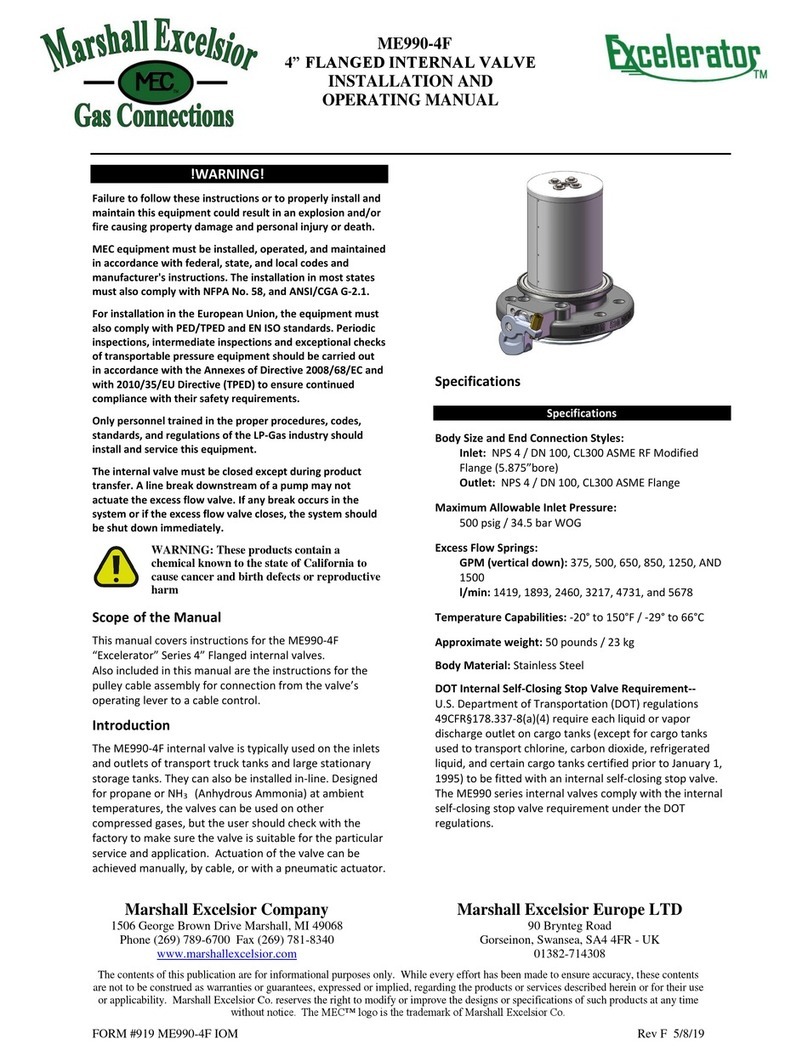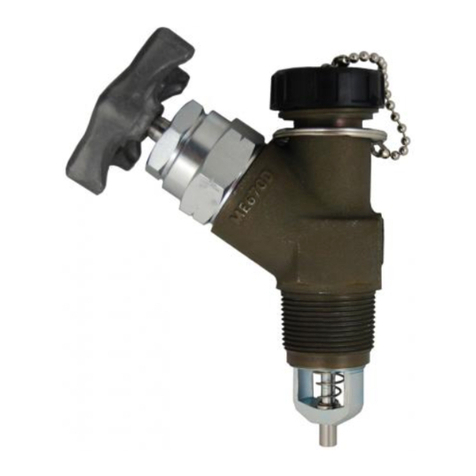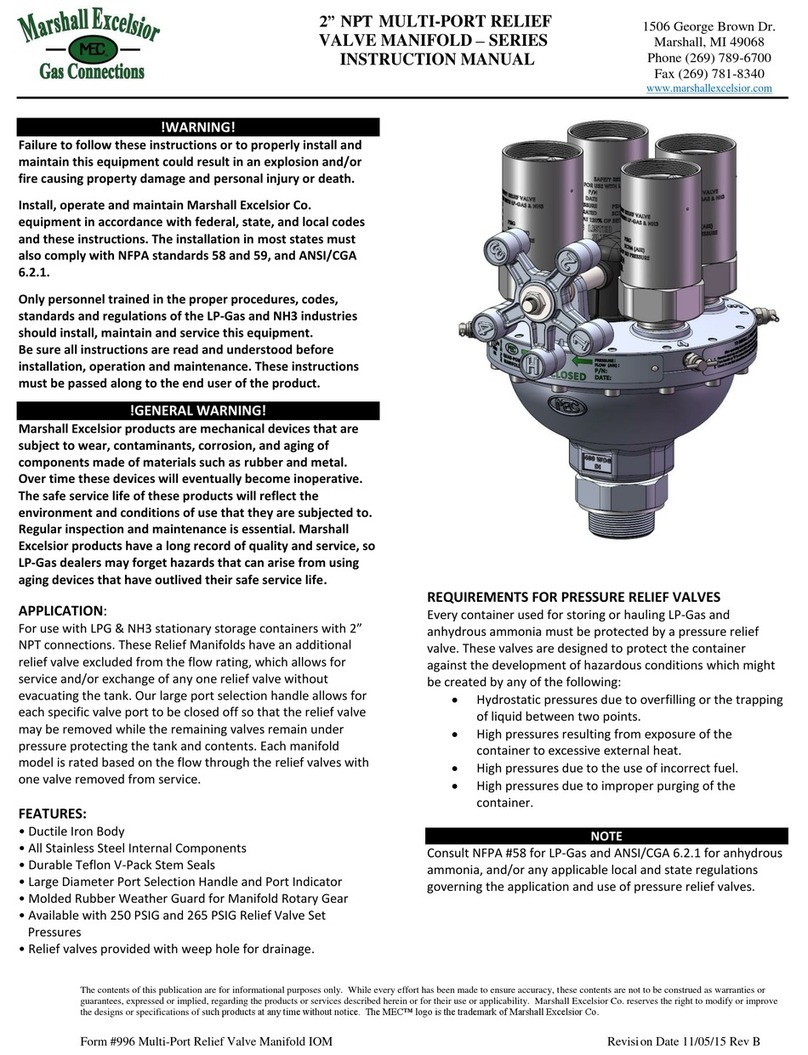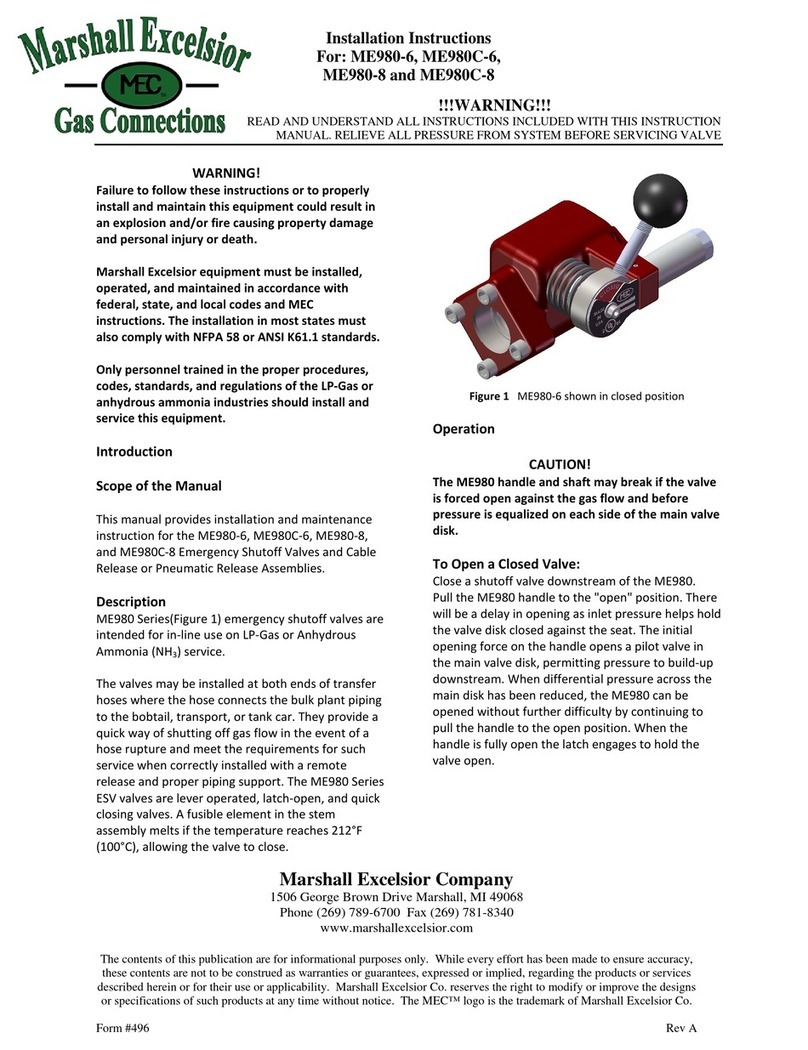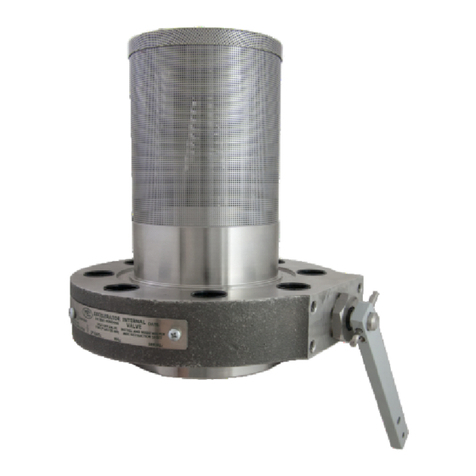
Form #904 Rev A
When starting up the MEGR-198H, slowly open the upstream
shutoff valve, and then slowly open the downstream shutoff
valve. Check all piping and connections for leaks before
making any final pressure adjustments. The nameplate
provides the range of allowable pressure settings. For
pressure settings outside the allowable range, change to the
appropriate range spring and remember to change the
nameplate accordingly. When changing the range spring,
make sure that the diaphragm is properly installed and not
damaged. Check the unit for external leakage after rebuilding.
Before applying pressure to the “In” port of the MEGR-198H,
make sure that some range spring force is established as the
adjusting screw is rotated. Clockwise rotation of the adjusting
screw will increase the relief pressure setpoint;
counterclockwise rotation of the adjusting screw will decrease
the relief pressure setpoint. Then, slowly apply pressure to the
“In” port of the MEGR-198H and rotate the adjusting screw
until the desired relief pressure set point it reached.
Note: The use of a pressure-measuring device is highly
recommended when making any pressure adjustments with the
regulator.
Severity of conditions and the requirement of both state and
federal laws determine the frequency to which the regulators
need to be inspected. Debris in the process line, exterior
damage, and normal wear could require the replacement of
parts such as the diaphragm. The procedures below will
provide assistance when attempting to replace these parts.
Warning!
When attempting any inspection or disassembly, relieve all
pressure from the MEGR-198H and its adjacent piping so
as to prevent personal injury or equipment damage as a
result of an explosion or sudden pressure release.
To Access the Range Spring:
1. Loosen the Jam Nut (Item #15) and turn the
Adjusting Screw (Item #10) until there is no spring
force being applied.
2. Unscrew the Build Screws (Item #19) and lift the
Bonnet (Item #2) off of the regulator.
3. Remove the Spring Guide (Item #12) and the Range
Spring (Item #7). If the output pressure range is
being changed, place new Range Spring on the Piston
(Item #17) and reassemble by reversing the above
steps and torque the Build Screws to the Torque Spec
on Table 2.
To Access the Diaphragm Assembly and Valve Plug:
1. If the Diaphragm Assembly and Valve Plug need to
be accessed, disassemble the top half of the regulator
by performing the steps above. Carefully remove the
Diaphragm Assembly and Valve Plug (Item #4) by
lifting the Diaphragm Assembly straight up out of the
Valve Plug Guide (Item #13) counterbore. Be careful
not to drop the Valve Plug and damage the outer
diameter.
2. Inspect the Diaphragm (Item #8) in the Diaphragm
Assembly. If it is a metal diaphragm unit, there
should be two diaphragms in the unit. If there is any
damage to the Diaphragm, disassemble the
Diaphragm Assembly and replace the Diaphragm.
For metal diaphragms, the Diaphragms must have
their concave part facing up. The Lock Nut (Item #
16) must be tightened according to the Torque Spec
provided in Table 2.
3. Inspect the Gasket (Item #11 – metal to metal units
only) for damage. If there is any visible damage,
replace the Gasket.
4. Inspect the Valve Plug. If the Valve Plug is metal at
the sealing surface and there are nicks on that
surface, replace the Valve Plug. If the Valve Plug
has an O-Ring (Item #9) at the sealing surface,
replace the O-Ring if it is cut or punctured. A
medium strength Threadlocker should be used to
reseal the Machine Screw (Item #21) into the Valve
Plug.
5. Reassemble the unit.
To Access the Orifice:
1. Remove the Valve Plug Guide (Item # 13) from the
Body (Item #1).
2. Inspect the sealing surface of the Orifice (Item #3)
inside the Body. If there is damage to the sealing
surface, remove the Orifice from the Body and
replace.
3. If no other maintenance is required, reassemble the
pieces in reverse order from the previous steps and
torque the Orifice, Valve Plug Guide and Build
Screws to the Torque Spec provided in Table 2.
Make sure to reapply Never-Seez® to the threads of
the Orifice and the Valve Plug Guide. Make sure to
apply Lubriplate to the threads of the Adjustment
Screw.
4. Before tightening the Build Screws down and
applying the torque in Table 2, make sure to drive the
Adjusting Screw down to engage the spring force and
pick up the slack of the Diaphragm Assembly.
Set the desired output pressure and tighten down Jam
Nut until it is snug with the Bonnet.
